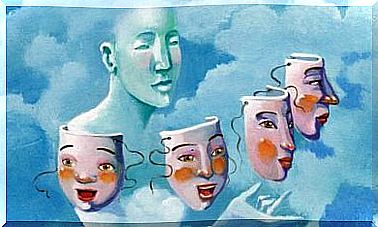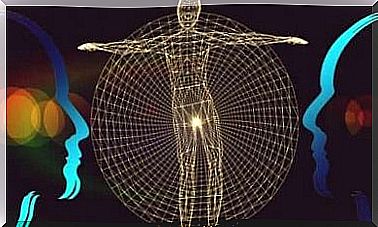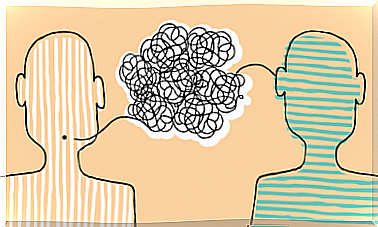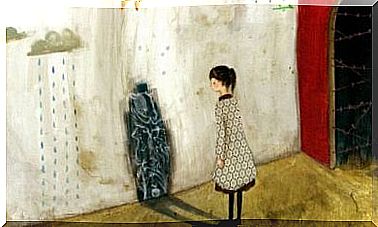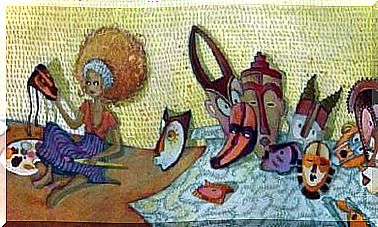The Borromean Knot In Psychoanalysis
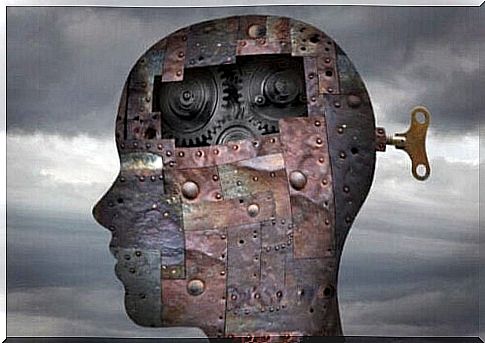
Because psychoanalysis is complex, many experts use metaphors and analogies to make it easier to conceptualize ideas. One of these analogies is the Borromean knot, a brilliant way to explain how our minds work.
Learning about the Borromean knot is a foray into Lacanian psychoanalysis, which examines different aspects of individual thoughts, emotions, and behaviors. It also looks at an individual’s connection to reality.
Jacques Marie Emile Lacan was a French psychoanalyst and psychiatrist born in 1901. He was one of the most relevant figures of contemporary French structuralism.
His theories were equally accepted and rejected. He was involved in the Freudian movement and caused some tension at the International Psychoanalytical Association. He eventually even distanced himself from the association. In 1964 he founded the Freudian School of Paris.
His contributions to psychoanalysis were related to philosophy, linguistics and art. He was friends with artists such as Andre Breton and Salvador Dali and elaborated on the work of Heidegger, Strauss and Hegel. Lacan’s work is quite controversial.
Some believe it has no Freudian roots, although Lacan himself advocated a return to Freud. He argued that psychoanalysts are not neutral listeners and subconsciously emphasized desire and pleasure.

What is the Borromean Knot?
The Borromean knot refers to three interconnected rings that form a knot (or chain). If one of the rings were cut, all three would be separated. The symbol comes from the image on the coat of arms of the Borromi family.
Lacan used this knot to help describe the structure of speaking subjects, divided into the following parts:
- The Imaginary. This is the first registry associated with images. At the root is the structure of the self, which develops through images of the other, through identification, starting with the mother.
- The Symbolic Register. This is essentially linguistic in nature. It links to the intersubjective field with which we exchange information with the other. It also has to do with the field of knowledge, culture and the big ‘other’.
- The Real Register. This is everything that cannot be represented by images or language. In other words, the unknowable, unthinkable, or whatever you resist. It differs from reality in that the real is the way you understand the world, so it fits into symbolic or imaginary registers. The real, on the other hand, has no meaning.
Therefore, the Borromean knot is a topology. In his book On the Names of the Father , Lacan suggests that the three registers are present in every subject.
In addition, they must be intertwined in order for the reality of the subject to be consistent and to maintain a dialogue and social connection with the other. The different ways of tying together thus determine one’s mental structure.
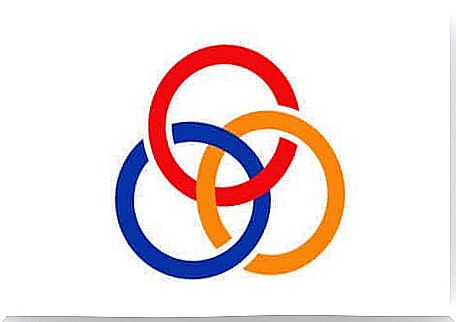
Concepts related to the Borromean knot
At one point in Lacanian theory, there were only three registers in the Borromean knot. Lacan later added a fourth register, which he called the sinthome. It brings together the real, the imaginary and the symbolic.
The sinthome helps the subject to anchor himself in such a way that he can connect with reality and adapt to it. It serves as an enclave for the subject. If released, it can lead to psychosis.
Another concept of Lacan is The Name of the Father, which acts as a fundamental law. It is the essential form that keeps these three registers connected. Lacan thus believed that the paternal function is the anchor of the symbolic activity of the individual, that which the law imposes.
You can also associate the knot with the object because it is the other part of the desire that makes you feel like something is missing in your life. It has to do with loss. So not only does the subject have three registers, but it is also ruled by impulse.
Language runs through the impulses and motivates the individual towards the object of his desire. If you satisfy your desire, you will experience pleasure. If you don’t, you will experience suffering. Finally, when you resist reality, a ghost appears.
Your mental structure
Basically, the Borromean knot represents the connections that make up your mental structure. The Symbolic register shows that there are laws that regulate interactions and are closely related to the language that makes up the world.
The Imaginary Register has to do with the mirror image of the body with which you can identify yourself. The Real is everything that has to do with existence, those things that are not right and difficult to put into words.
So, the way your knot is tied (or untied) determines your mental structure. The sinthome also appears as a fourth register that prevents the onset of psychosis-related behavior. In short, the Borromean knot is a fascinating analogy for understanding how the mind works.
